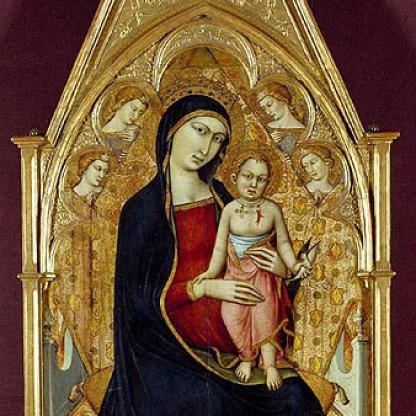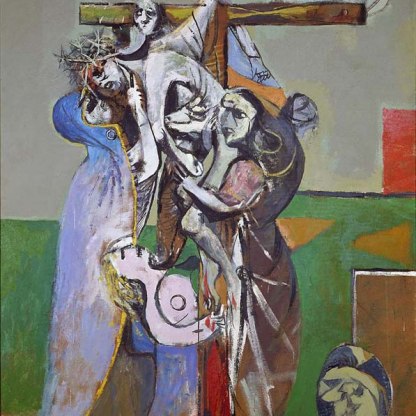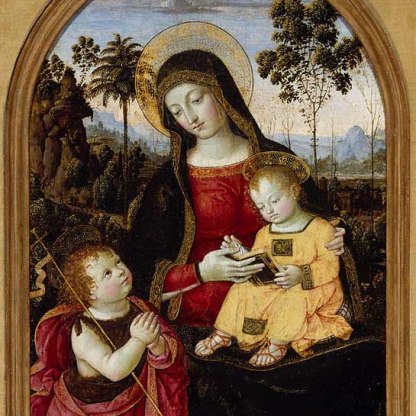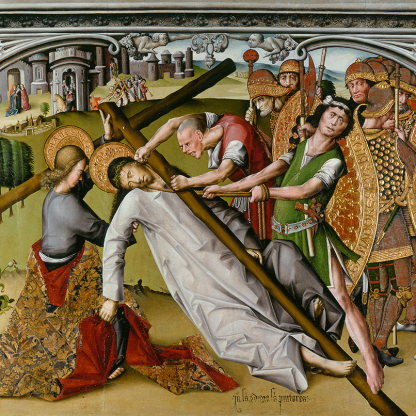The Goldfinch
The goldfinch that Christ holds in his left hand in Luca di Tommè’s altarpiece can be interpreted in a number of different ways that both humanise the child and emphasise his divinity.
Since ancient Egypt, the human soul had been represented in religious art by a small bird. We see the Ba (the soul bird) on a detail of an Egyptian coffin from the Fitzwilliam [E.1.1822]. A very general reading of the goldfinch might, therefore, remind the viewer that his soul is ‘in the hands’ of God.
The bird could also be seen as a symbol of the Resurrection of Christ. A non-biblical legend popular in the middle ages related how the child Jesus, when playing with some clay birds that his friends had given to him, bought them to life. Medieval theologians saw this as an allegory of his own coming back from the dead.
In another legend, when Christ was carrying the cross to Calvary a small bird – sometimes a goldfinch, sometimes a robin – flew down and plucked one of the thorns from the crown around his head. Some of Christ’s blood splashed onto the bird as it drew the thorn out, and to this day goldfinches and robins have spots of red on their plumage. Like the cross that Christ wears around his neck, therefore, the goldfinch might be read as a prefiguration of his Passion.
More specifically, and relevant to Luca di Tommè’s times, the goldfinch was seen as a protector against the plague. Since classical times superstition had credited a mythical bird – the charadrius – with the ability to take on the disease of any man who looked it in the eye. On the left is a page from an early thirteenth-century English bestiary [MS.254.f.27], showing this bird perched upon a sick man's bed, staring directly at him. The charadrius was sometimes represented as a goldfinch. Along with his coral amulet, perhaps Christ’s finch offers the worshipper protection against the seemingly unstoppable contagion.
Lastly, it should be said that the goldfinch could simply represent a goldfinch. In the fourteenth century, it was common for young children to keep tame birds as pets. On the simplest level, Christ's holding a bird allows a parent or a child to recognise his human nature, to identify with him. Despite the angels and the celestial gold background, the viewer is reminded that God lived and died as a man upon the earth.
Other highlight objects you might like
Other pathways and stories you might like
Sign up to our emails
Be the first to hear about our news, exhibitions, events and more…





